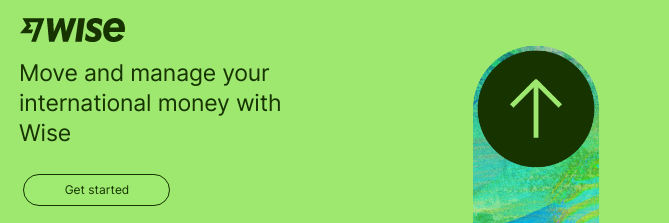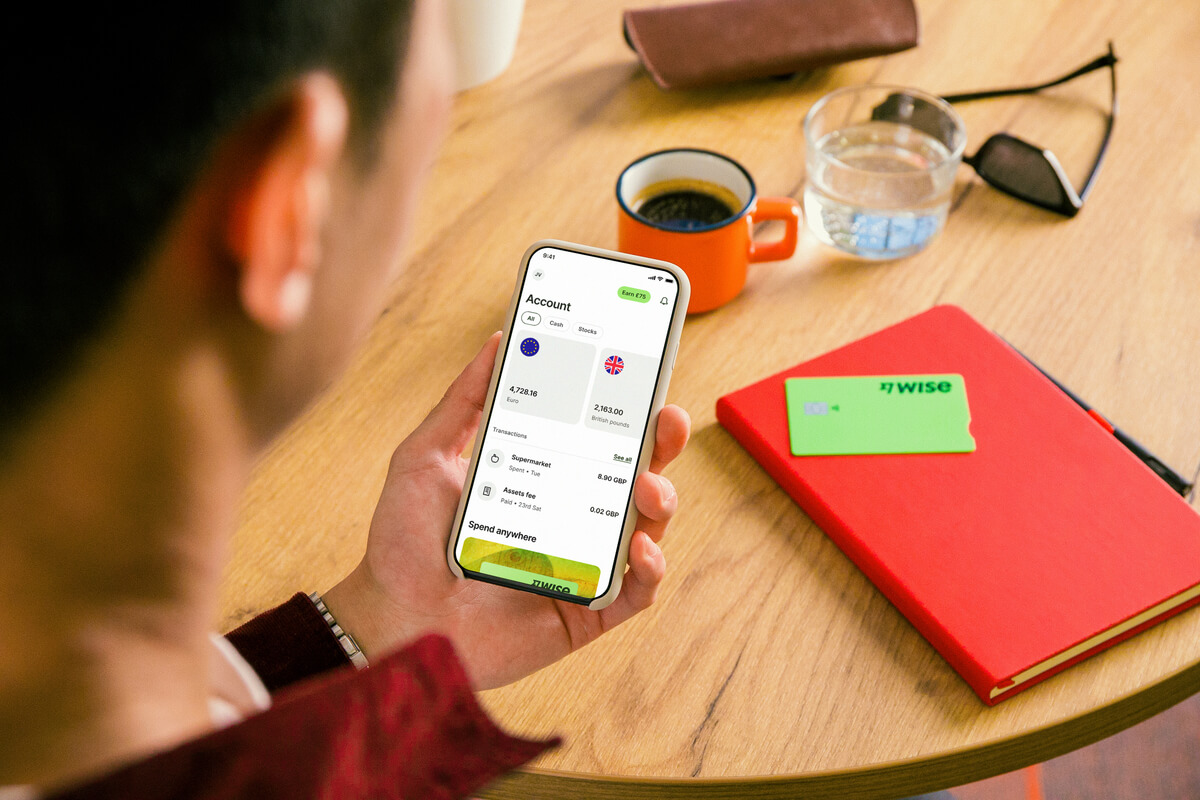

ACH direct deposits are electronic payments like salary and government benefits, which are made directly to individual bank accounts through the ACH network.
In this guide, we’ll cover key questions including:

We’ll also introduce the Wise as the smart way to cut the costs when sending or receiving international transfers. More on that later.
ACH stands for Automated Clearing House¹ — the network behind many of the electronic payments you’ll send and receive on a daily basis.
The ACH network allows customers to send and receive money electronically — often for free.
This makes it a very popular way for companies, organizations and institutions to send out payments.
In fact, most Americans get paid by ACH direct deposit when they receive their salaries, pensions or any government benefits.
A direct deposit payment in the US is usually routed through the ACH network. So a direct deposit is always an ACH payment — but there are also other types of ACH transfer which are not direct deposits.
A direct deposit is an ACH credit payment, in which a payer — like your employer — pushes money to your account for automatic depositing.
There are also ACH debit payments which work differently, by allowing a recipient to pull money from your bank account automatically — like when you set up automatic bill paying services.
ACH payments move from one bank account to another electronically. If you’re expecting to receive an ACH direct deposit, you’ll need to give the payer your bank account number and routing information.
For most individuals getting paid through ACH direct deposits, the process is as simple as giving your employer or other payer a few details, and the money will then arrive in your account with no further action.
However, as you may expect, there’s a bit more going on in the background to ensure your transfer is processed quickly and securely every time — read on for more detail about how ACH works in practice.
| ODFI stands for Originating Depository Financial Institution. |
|---|
ACH payments are made through strictly outlined, managed and audited processes to ensure they’re safe, fast and reliable — and the ODFI is an important part in each ACH transaction.
An ODFI acts as the originator of an ACH transaction, and is also the interface between the ACH network and the Federal Reserve.
| RDFI stands for Receiving Depository Financial Institution. |
|---|
Financial institutions must be authorized as RDFIs in order to allow customers to receive payments through ACH transfers.
RDFI institutions have their own responsibilities within the ACH payment workflow, including checking and posting all transfers received within agreed timelines.
Financial institutions may be both ODFIs and RDFIs — or just one or the other.
In either case, these financial institutions must work with ACH operators or the Federal Reserve to make sure that ACH transactions run smoothly and within the agreed processes for security and transaction speed.

If you send or receive international payments, you may be better off with a Wise Account.
Open your Wise account online for free to hold 50+ currencies, send payments to 80+ countries and get paid like a local in 10 currencies.
There’s no minimum balance and no monthly fee to maintain your account — and because currency conversion always uses the mid-market exchange rate with no hidden costs, Wise can sometimes be cheaper than other payment providers.
No sneaky fees, and no exchange rate markup. Just easy and intuitive low-cost payments around the world.
| Please see Terms of Use for your region or visit Wise Fees & Pricing for the most up to date pricing and fee information |
|---|
So where are ACH direct deposits used then? Huge volumes of payments pass through the ACH network all the time, so it’s no surprise that ACH direct deposits are pretty common.
Here are some popular ways they’re used:
ACH direct deposit² salary payments are received into a checking or savings account as a credit. You can usually set up a direct deposit easily by completing your company’s direct deposit registration form.
You can even ask for your money to be sent to more than one account as a split deposit. This is a good way to deposit some of your salary into a savings account, or to divide your income between different accounts used for different purposes.
If you’re owed a tax refund from the IRS you can opt for an ACH refund so you don’t have to wait for a check to arrive and clear.
It’s also pretty common for interest and dividend payments from banks, investment companies and so on to be paid out by ACH for convenience — and because this is often the cheapest way for the company to get money into your hands.
Government agencies use ACH direct deposit payments for benefits as they’re cheap and convenient.
As with salary payments, benefit ACH transfers can be scheduled in advance so they should always arrive on the planned date, and nobody needs to wait for the money they're owed to arrive and be ready to use.
In most cases you won’t need to pay a fee when you receive an incoming ACH direct deposit payment.
It’s worth checking with your bank, as account terms and conditions do vary, but for standard accounts with major providers like Chase³, US Bank⁴, and Bank of America⁵, there are no incoming ACH direct deposit fees to worry about.
ACH network administration fees are paid by banks and credit unions that interact with the NACHA ACH network.
Consumers do not need to pay these costs, as they’re used to keep the behind the scenes network running and to allow banks to offer ACH transfer services to their customers.
Interested in learning more? Here are some more common questions about ACH direct deposits, and all the answers you need.
An ACH debit is also known as a ‘pull’ payment, as it allows an individual to give a company or organization permission to pull funds from their bank account on an agreed schedule.
You can use an ACH debit to pay regular bills, like your utilities or mortgage, and you’ll only need to set up the transfer once to ensure ongoing payments for as long as you need them.
In the US, direct deposit payments typically go through the ACH network. Other countries use slightly different payment networks, which means that what we call an ACH direct deposit in the US may have a different name in another location.
ACH direct deposits can be scheduled with a same day, next day or 2 day delivery times.
That means, for example, that your employer can schedule your salary to arrive on the agreed payday with reliable delivery times⁶.
ACH is a payment network, commonly used for transfers made electronically from your bank account. ACH payments are usually made in the US only, and paid out in US dollars.
Other types of bank transfers — such as bank international wires — are also available, and have their own features and fees.
Sources:
Sources checked on 02.20.2023
*Please see terms of use and product availability for your region or visit Wise fees and pricing for the most up to date pricing and fee information.
This publication is provided for general information purposes and does not constitute legal, tax or other professional advice from Wise Payments Limited or its subsidiaries and its affiliates, and it is not intended as a substitute for obtaining advice from a financial advisor or any other professional.
We make no representations, warranties or guarantees, whether expressed or implied, that the content in the publication is accurate, complete or up to date.

Personal Finance
Read on for everything you need to know about sending and receiving international wire transfers with Huntington Bank.

Personal Finance
Here’s everything you need to know about international wire transfers, including the options available, what information is needed, and how to fill one out.

Personal Finance
Read on for everything you need to know about sending and receiving international wire transfers with Vanguard.

Personal Finance
Closing on a house? Read on to find out the key differences between a wire transfer and cashier's check and which is best for you.

Personal Finance
Read on for everything you need to know about sending and receiving international money transfers with MoneyGram.

Personal Finance
Read on for everything you need to know about sending and receiving international wire transfers with Citizens Bank.